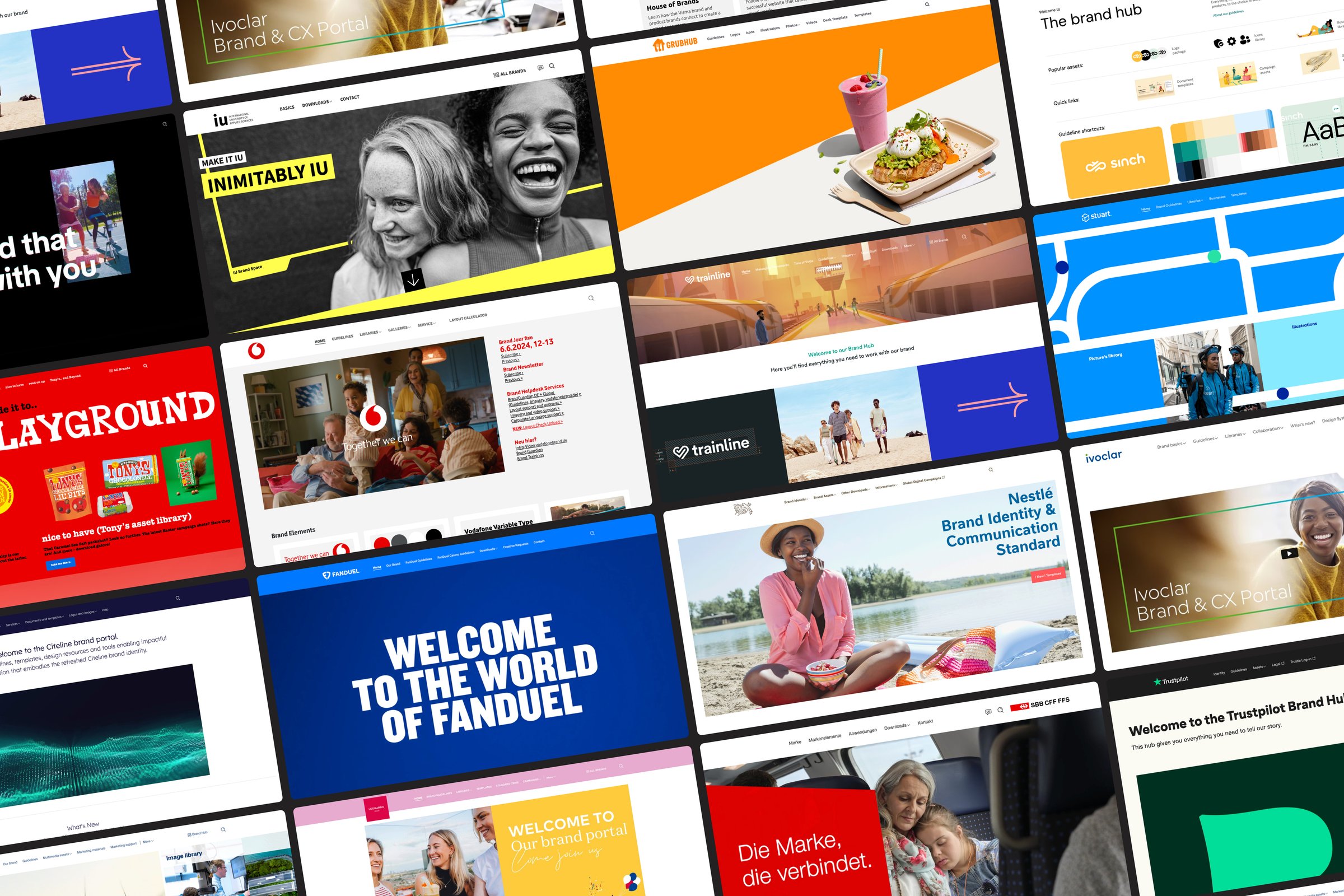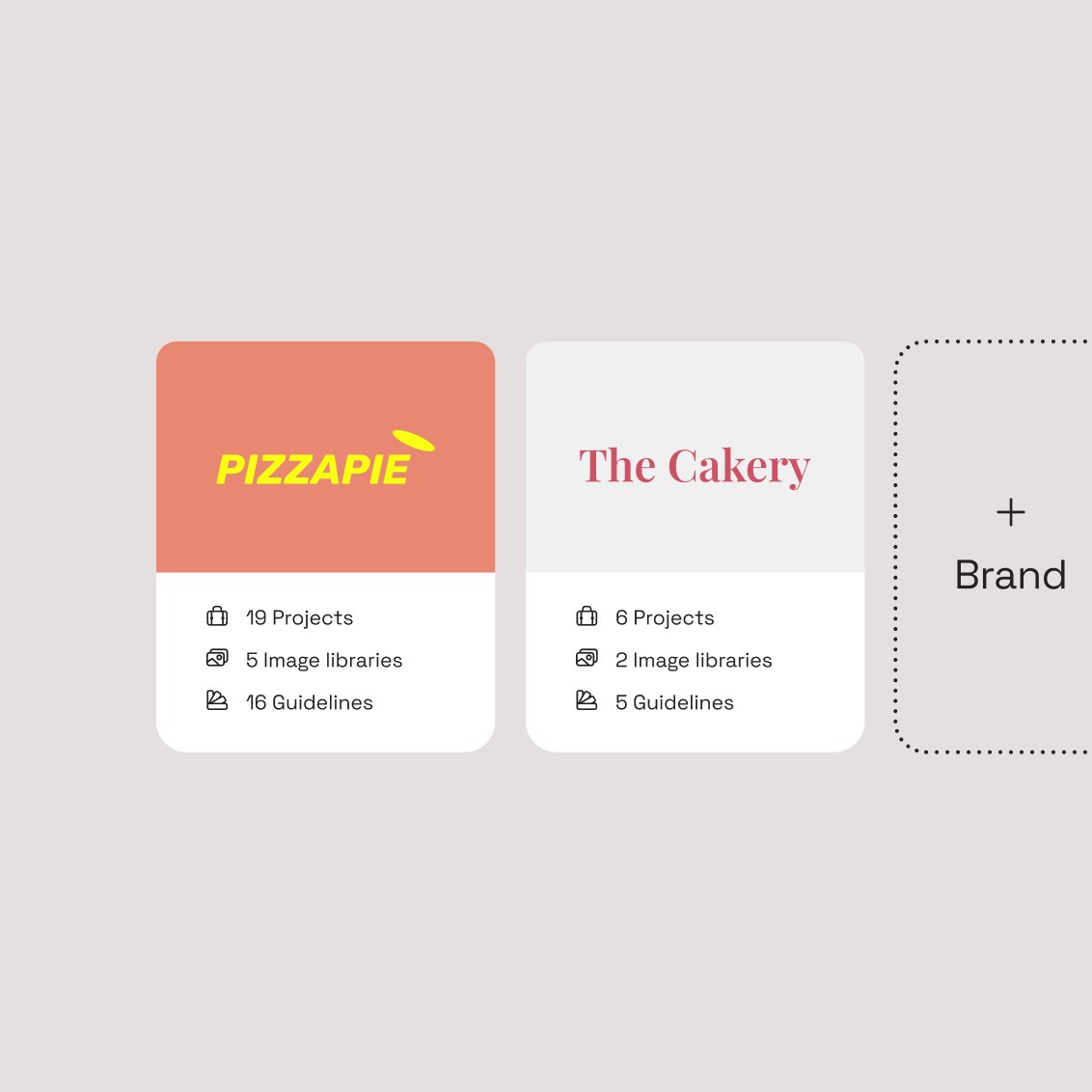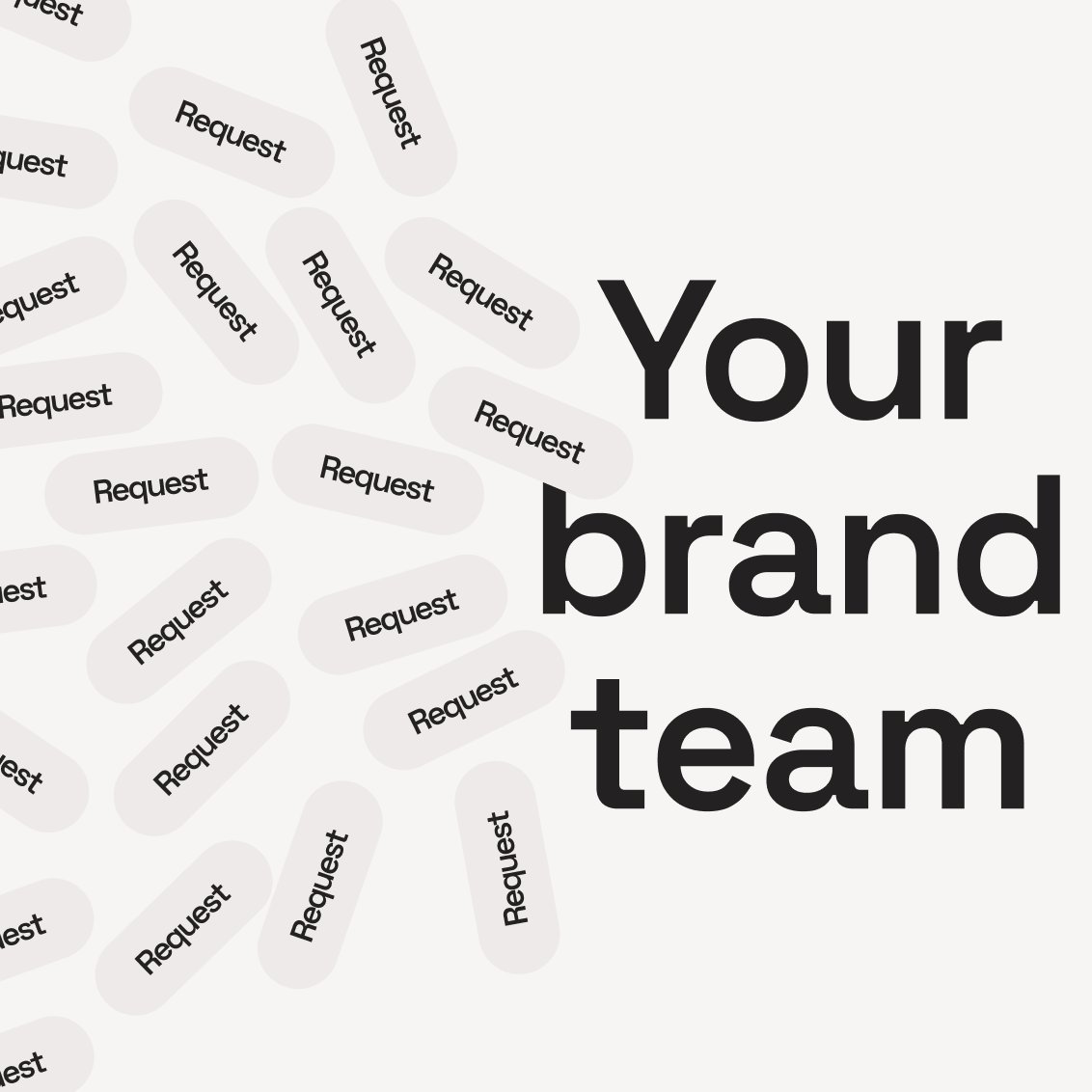Key takeaways
- A brand portal centralizes your guidelines and assets in one living hub, transforming static rules into interactive experiences
- Brand inconsistency erodes brand equity — portals ensure every touchpoint remains aligned with your brand vision
- Portals help break knowledge silos by democratizing brand access, turning every employee into a confident brand ambassador
- Beyond organization, brand portals fundamentally change how your entire organization connects with and expresses your brand
Your brand is your most valuable asset. It's the heartbeat of your business, the promise you make to the world, and the reason customers choose you over competitors. Yet in today's fragmented digital landscape, your brand lives across countless touchpoints — each one an opportunity to strengthen or dilute its power.
When teams lack a central source of truth for your brand, inconsistency becomes inevitable. Every misaligned presentation, off-brand social post, or outdated logo isn't just a small mistake — it's actively eroding the brand equity you've worked so hard to build.
This is exactly where brand portals come in — not just organizing your assets, but transforming how everyone experiences, understands, and champions your brand.
What is a brand portal?
A brand portal is a centralized online platform where you store everything related to your brand. Unlike simple file storage systems, a brand portal isn't just about where your assets are kept — it's about bringing your brand guidelines to life in a way everyone can understand and apply.
A truly effective brand portal brings together:
- Brand guidelines that document the rules, standards, and guidance on how to communicate your brand correctly
- Access to approved digital assets that ensures everyone uses the right files every time
While brand portals and Digital Asset Management (DAM) systems often work together, they serve different purposes. A DAM organizes files, but a brand portal creates an experience. It's the difference between having brand rules and actually living by them.

Why are brand portals important?
In a digital world fragmented across countless touchpoints, brand consistency isn't optional — it's the foundation of trust. Your audience experiences your brand across more channels than ever before, and they expect a seamless experience at every turn.
Delivering brand consistency across global operations
For international businesses adapting their brand to different markets and cultures, a brand portal becomes the unifying force.
It organizes your brand materials across sub-brands and regions while ensuring everyone accesses exactly what they need. Teams everywhere can confidently represent your brand knowing they're using the right materials every time.
Ending the request chaos
Remember the last time someone asked, "Can you send me the latest logo?" Those days are over. With a brand portal, everyone accesses what they need, when they need it — no more endless email threads or frantic searches across shared drives. Your marketing team can finally focus on strategy rather than fielding basic asset requests.
Democratizing brand knowledge across your organization
In too many companies, brand knowledge remains locked in the minds of a select few—creating bottlenecks and brand gatekeepers rather than brand ambassadors. We believe your brand thrives when everyone understands and connects with it.
A brand portal breaks down these artificial walls, transforming your brand from an exclusive club into an inclusive movement. When everyone from leadership to new hires can access, understand, and contribute to your brand story, your brand identity grows stronger with every interaction.

The benefits of implementing a brand portal
Implementing a brand portal isn't just another item on your digital transformation checklist — it's a fundamental shift in how your organization relates to your brand. The impact goes far beyond organized files.
From brand police to brand empowerment
We've all seen the traditional approach to brand management: the marketing team becomes the "brand police," constantly saying no and slowing down creativity. A brand portal flips this dynamic completely.
By providing interactive examples that show both successful and unsuccessful brand applications, you transform abstract guidelines into practical knowledge. People don't just learn what your brand looks like — they understand why it matters and how to apply it correctly.
Support brand architecture within large organizations
Whether you operate as a branded house, house of brands, or a hybrid model, your brand architecture deserves a home that respects its complexity without creating confusion.
A powerful brand portal adapts to your specific structure, creating intuitive pathways for each brand while maintaining appropriate separation. Users only see what's relevant to their work, eliminating the confusion that leads to brand misuse.
Democratizing creation through templates
One of the most key aspects of a modern brand portal is the template system. These aren't just design files — they're guided creation tools that empower everyone to produce on-brand content.
With locked brand elements and flexible content areas, your teams create materials that are automatically on-brand. The design bottleneck disappears, and your creative team finally focuses on high-value work rather than routine updates.
Opening your brand to the right external partners
Your brand extends beyond your employees. Agency partners, distributors, media outlets, and other external stakeholders need appropriate access to your brand materials without compromising security.
A brand portal provides customized external experiences with precisely controlled permissions, ensuring partners have what they need while protecting your brand assets.
How brand portals integrate with your brand ecosystem
Your brand portal shouldn't exist in isolation. The most powerful implementations connect seamlessly with the tools your teams already use daily:
- Design tools like Adobe Creative Cloud and Figma
- Communication platforms like Slack and Microsoft Teams
- Content management systems like Webflow and Contentful
These integrations bring your brand into existing workflows, ensuring governance without disrupting productivity. Your teams access brand assets and guidelines without leaving the tools where they create.

Brand Portal, DAM, and CMS: What are the differences?
We often hear confusion about how these systems relate:
- A brand portal is the living home for your entire brand experience, potentially including guidelines, assets, templates, and education.
- A DAM focuses specifically on organizing and distributing digital files efficiently.
- A CMS manages the content on your website, including publishing workflows.
Rather than competing, these systems complement each other. Your brand portal might integrate with your DAM system to provide asset access, and connect to your CMS to ensure web content stays on-brand.
Some companies use DAM systems independently, but we've found they work most effectively as part of a comprehensive brand portal. The DAM handles file organization, while the portal creates the full brand experience.
Essential brand portal functionality
When evaluating brand portal solutions, focus on these key capabilities:
Security that doesn't block access
Your portal needs to balance security with usability, allowing the right people to access exactly what they need. Look for customizable permission structures:
- Viewers who access and share approved assets
- Editors who contribute new content
- Reviewers who approve materials before publication
- Owners who manage the entire system
The ability to create custom audience groups ensures users only see relevant assets, eliminating confusion and misuse.
Templates that enable without compromising
The most powerful brand portals include template systems that balance freedom with control. These templates lock brand elements while allowing customization of content, empowering everyone to create on-brand materials without designer intervention.
Look for approval workflows that maintain quality without creating bottlenecks, giving brand teams visibility without slowing down the process.
Flexibility for multi-brand organizations
If you manage multiple brands, your portal must support your specific brand architecture:
- Branded house structures with a strong master brand
- House of brands approaches with independent sub-brands
- Hybrid models that combine elements of both
Your brand architecture is unique to your organization. Your portal should adapt to your needs, not force you into a predetermined structure.

Whatever your brand architecture looks like, you need a brand portal that has the flexibility and can be customized to support your setup. You want a space that fits your brand rather than trying to fit your brand into the constraints of a rigid system.
Examples of best-in-class brand portals
Uber

Uber’s brand portal enables more than 20,000 people in the company to create, manage, and share assets. “It really demonstrates a one Uber, one brand approach. We’re all one company that is built on the same solid foundation, the same platform,” explained Uber Global Creative Director Brian Coonce.
“When we launched Frontify, it was almost overnight that about 2,000 people were using it,” said Shayla Love, Senior Executive Producer. Today, more than 20,000 Uber brand builders have engaged with the platform globally — about 12% of the company creates, manages, and shares assets through a centralized hub.
Learn more about how Uber’s brand portal
Budweiser

Budweiser’s brand portal brings their brand to life. In one central hub, they house the core elements and assets for their core brands across multiple platforms. They’ve built a global asset library to house brand assets for 20 different countries, improving brand consistency by making it easier for people to find and use the correct ones for their market
Learn more about how Budweiser's brand portal
Telefónica

Telefónica manages 16 brands across 16 global markets. Its brand portal — which the Telefónica team refers to as their Brand Factory — provides an intuitive, scalable, centralized space to manage and maintain a high level of consistency across all its brands and markets.
Frontify’s unique approach to brand portals
Frontify’s brand portal provides a single source of truth for everything brand-related. Here’s how our solution enables teams of all shapes and sizes to work together to build their brand:
- Customize entry points to your brand hub: Create a central hub that points people in the right direction so they can easily find the materials they need. Navigate straight to each sub-brand, important asset collections, brand guidelines or tutorials, and resources for particular teams or projects.
- Collaborate on brand projects in real time: Get everyone working in the same shared, collaborative space, and enable users to request and exchange feedback. Automating approvals processes and setting up workflows make cross-team work simple.
- Create a one-stop shop for brand management: Centralize all your brand materials — from digital assets and code snippets to guidelines, design templates, and creative projects — so it’s easy to find the right resources. Save your marketing team from yet another email asking where the right logo is, and help people find it themselves.
We work with over 2.5 million brand builders at some of the world’s leading brands, like Kia, Borussia Dortmund, and the Emmy® Awards. According to our customer reviews on G2, users love Frontify’s brand portal solution because it saves them time and brings all their brand assets into one centralized place.
Our software helps everyone and everything brand-related come together – and thrive – under one roof.


